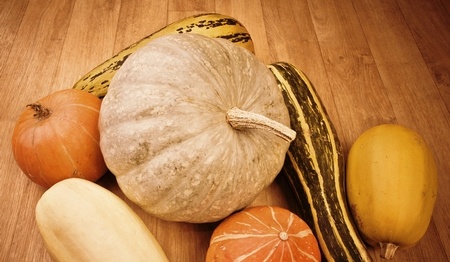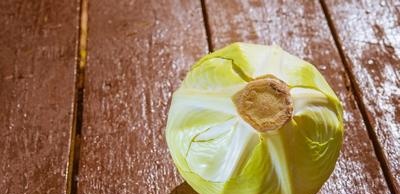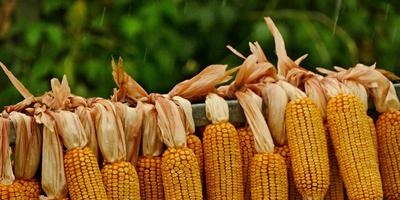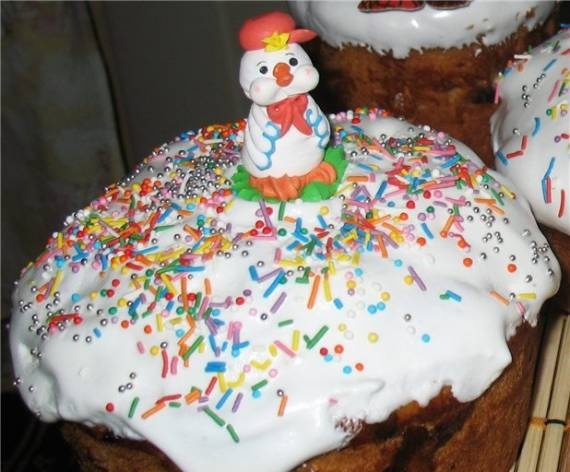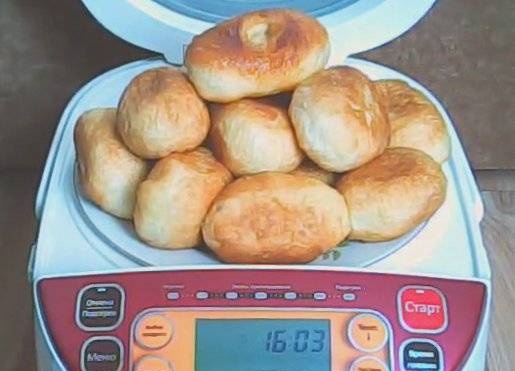|
 Surpassing pumpkin in fruit size is difficult, if not hopeless. The classic vegetable business professor N. Kichunov was proud at one time that he had grown a pumpkin weighing half a centner, and then it turned out that there are even larger ones. Surpassing pumpkin in fruit size is difficult, if not hopeless. The classic vegetable business professor N. Kichunov was proud at one time that he had grown a pumpkin weighing half a centner, and then it turned out that there are even larger ones.
At the beginning of our century, gardeners went out of their way to outdo each other and grow a pumpkin for a prize. They came up with various clever methods of increasing the size. True, the prize-winning hulks differed only in cyclopean sizes. The taste turned out to be watery and insipid, because the owners, in pursuit of a sensation, overfed them with liquid fertilizers.
As for the taste, the gardeners noticed an interesting fact near St. Petersburg. The most delicious fruits are produced by a pumpkin planted on ... cellar roofs! At first, it was assumed that such a phenomenon is caused by the evaporation of those products that are stored in the cellar. They began to try to fill the underground storerooms with exquisite dishes. However, the reason turned out to be more prosaic. It's just that in the conditions of damp Petersburg, these roofs turned out to be the driest place, from where excess moisture that was harmful to the taste of these vegetables rolled down.
From this they made the right conclusion: it is necessary to water the pumpkin, but not too much. And since in those days there were no special relays and sensors, the magazine "Garden and Vegetable Garden" offered a simple and reliable tool. Its essence is as follows: a bucket of water is placed next to the pumpkin lash. The end of the cotton rope is lowered into the bucket. Something like a big wick. The other end of the wick is wrapped around the stem and pushed into the ground near the roots. Water gradually oozes out, irrigating the roots exactly when they need moisture. Each lash works with its own plumbing!
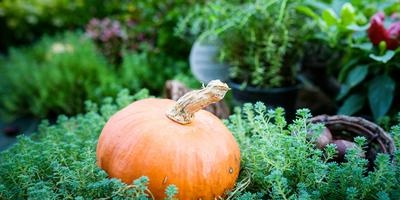
True, here you have to think and not do everything according to the template. Soon after the publication of the note about the pumpkin plumbing, indignant letters poured into the editorial office. Readers complained that the wick bucket didn't add to the size of the pumpkins. And the harvest. And all due to the fact that lovers of prize creations did not bother to read the magazine's advice in full. They put the bucket. The wick was buried in the soil. But they did it too early, when the ovary on the lash had not yet reached the size of a fist (which is exactly what the magazine advised!). As a result, the greenery grew too much, and there was little left for the share of the fruit!
At the end of the war, a witty solution to the pumpkin problem was found by Muscovite A. Zemlyakov, who was then the chief engineer of the Moscow Aviation Institute. While working on the gardening commission, he insistently suggested that employees plant plantations in construction waste dumps near houses on the outskirts of the capital. Those indignantly refused. Then Zemlyakov got down to business himself. He dug holes, poured guda over a bucket of fertile soil and planted pumpkins. The fruits have grown extremely successful. Sweet. Beautiful. In Moscow, no one has ever received such. Then Zemlyakov explained his luck as follows. It is warmer near buildings. Moreover, the garbage heats up very much during the day, and then, under the wide pumpkin leaves, it gives its heat to the plants for a long time. You can't find a better place!
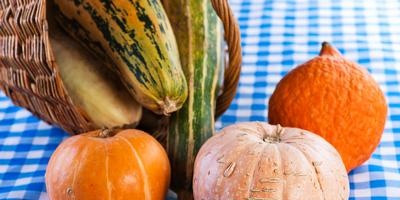
Well, if we are talking about pumpkin leaves, then one more useful quality should be noted. It has been known for a long time. Corn was sown with the pumpkin and beans... The calculation was this: beans protect corn from pests. But she cannot save her from weeds. And this is where the pumpkin comes to the rescue. Its wide, burdock-like leaves create such a reliable shade that the weeds cannot break through. As it is sung in the famous children's song: "What a company!"
In addition, the fruits, of course, grow. Though not for a prize, but the harvest is added. This rationalization interested me, and I began to search: is not anyone applying the triple culture these days? I did not find the triple. But I was informed about corn with pumpkin from Kazakhstan. In 1961, the agronomist M. Izvarin sowed them together in the same field.I received only one corn and a half times more than usual. And how many more pumpkins have grown! For this he received the VDNKh gold medal.
Now about pumpkin seeds. In previous years, pumpkin gardeners did not always know where to put their seeds. One of them, reflecting on this problem, realized that the seeds are very tasty, fatty, nutritious, and decided to offer his stock to confectionery factories. They click in the villages like seeds! Why not make halva? Or fillings for chocolates? With such a proposal, the innovator turned to the Rural Owner magazine. And that, in turn, to several confectionery factories.
The result was unexpected. The manufacturers unanimously rejected the gardener's proposal. Not only that, they expressed extreme bewilderment at the magazine's lack of awareness of the nutritional value of seeds. There are no words, the seeds are delicious, but they contain the anthelmintic substance pereresin. Who will eat halva or rubber-coated sweets? They must be taken to the pharmacy, not to the pastry shop!
Finding itself in an uncomfortable position, the magazine answered the reader dryly. And he added that there is only one way out: to knock out oil from pumpkin seeds. But since half of it will be absorbed into the husk, then such use will not give any benefit. With this second remark, the magazine was clearly in a hurry, without thinking it over properly. Husk, seed coat is a changeable material. Some varieties are thicker, others thinner. By selection, you can make it very thin. And now they have bred varieties and are completely naked. They were created specifically for squeezing oil.
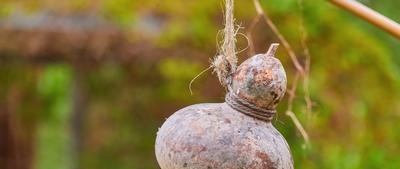
In some countries, this oil is obtained. And they love very much. In Romania, for example, pumpkin seed oil is considered as common in the kitchen as sunflower oil in our country. And no wonder. After all, the fat content of pumpkin seeds in our time is no longer 15 percent, as the old magazine wrote, but 50! This is higher than that of mustard, camelina, hemp. Higher than flax, poppy and even sunflower... And on the Don, they brought the fat percentage to 58 percent. True, inexperienced agronomists are sometimes let down by the most modern varieties. A person tries to breed larger pumpkins so that there is more oil. And suddenly he notices that the larger the fruit, the less oil. Check the fat content - high! What's the matter? But the fact is that in large fruits there are fewer seeds than in medium ones!
Of course, large fruits are not lost. They can be usefully fed to livestock. This is also beneficial. There is a story about a farmer who had several cows and 150 sheep, but lost his land. He left a small plot, a little more than a hectare. How to feed yourself from such a meager area, and even keep the cattle? The farmer went through all the known crops in his memory, calculated the possible harvest and realized that he could not make ends meet. And then he remembered the pumpkin. I decided to take a chance. When the harvest was ripe, he made silage. The four-legged ate it willingly.
The cows began to give more milk. It acquired such a pleasant taste that there was no end to the buyers. And the oil turned so yellow that some people suspected that the farmer was not coloring his produce? He himself ate pumpkin porridge.
I can attest that this dish is an excellent thing! I first tasted it during the war at the Don Cossacks. Since then, this is my favorite food. It is not only tasty, but also healthy, as evidenced not so long ago by the magazine "Health". And in the old days, gardeners tried to follow the movement of prices for milk and butter. If they started to rise in price, the area under the pumpkin was reduced. Otherwise, there is nowhere to sell. You can't cook porridge without milk.
What else can be said in favor of pumpkin? It has almost no pests. Wheat yield after pumpkin is higher than after any other row crop. And livestock feed yields better than any other root crop.
So: the perfect vegetable? No, the pumpkin also has flaws. Although it can lie all winter, it disappears from the markets by April. Even in Moscow. There are, of course, such pumpkins that lie until the next harvest. And even two years and three. But these are exceptions. Such fruits are taken from the garden, like small children, carefully so as not to knock, do not beat. And the variety must be chosen.
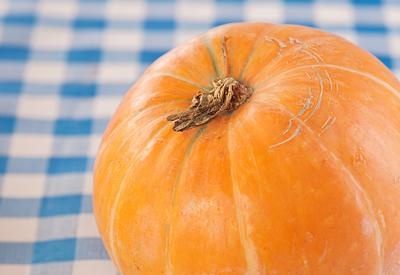
At first they thought it was all about wateriness.The more water in the fruit, the less keeping quality. It turned out that this is not always the case. Poltava gardeners got burnt on this. They had an excellent variety called Local Ryaba. It was well kept, but the third part was still rotting.
Poltava residents decided that it was due to excess water. The dry matter in Ryaboy was only 6 percent. I would find a variety to double that! Found. It was called Skorospelka. They expected the decline to halve. Instead, it tripled. Rotted almost the entire crop.
A reliable indicator is the thickness of the bark. If the bark is thick, the fruits stay longer. And here we come to the most difficult moment in acquaintance with the pumpkin. The whole variety of garden pumpkins belongs mainly to two genera - pumpkin large and ordinary. The first has a thinner bark. Therefore, connoisseurs try to feed a large one, and then an ordinary one. But how do you determine which variety is on the counter?
But let's say that the gardener is well versed with varieties and knows a lot of them. Another danger lies in wait for him if he wishes to cross the pumpkins and get new varieties. No matter how simple the pumpkin seems, but it drove more than one vegetable grower to despair. Pumpkin specialist L. Bailey, crossing pumpkins, sometimes could not understand the resulting offspring. New varieties retained their novelty for only one year. He failed to consolidate the necessary qualities. Not relying on himself, he sent seeds to the most famous seed scientists, but they could not get two forms similar to each other.
Discouraged by such behavior of his beloved brainchild, Bailey even decided that the laws of heredity are not always applicable to plants, and they definitely do not work for a pumpkin! But this scientist was the smartest man of his time and the author of many textbooks on vegetable business.
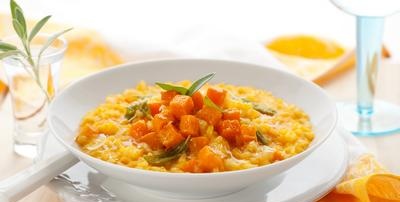
Of course, maybe Bailey didn't have the patience. The leapfrog in the pumpkin offspring just scared him. But on the other hand, she interested another scientist, L. Burbank. And he decided to find out, is it true that the laws of heredity bypass the pumpkin?
The case soon presented itself. Bailey sent pumpkin seeds from Chile, the fruits of which resembled in appearance a hundredfold enlarged acorn of an oak. The rind was hard like a cannonball and as heavy as lead. But the unique fruit was kept until the new harvest. And the pulp was distinguished by an unusual sweetness. In addition, the Chilean visitor grew well on dry land where ordinary pumpkins fail.
Burbank sowed the seeds of the Chilean miracle, but he grew up with such a motley company that at first they lost heart. However, it was still possible to select several desired individuals. The seeds from them again gave a lot of descendants, not like their parents. The pumpkin persisted. The scientist did not back down either. As a result, a persistent variety of acorn prominent was obtained and fixed. So Burbank proved that the laws of heredity also apply to the pumpkin. Patience and work won!
A. Smirnov. Tops and roots
|
 Surpassing pumpkin in fruit size is difficult, if not hopeless. The classic vegetable business professor N. Kichunov was proud at one time that he had grown a pumpkin weighing half a centner, and then it turned out that there are even larger ones.
Surpassing pumpkin in fruit size is difficult, if not hopeless. The classic vegetable business professor N. Kichunov was proud at one time that he had grown a pumpkin weighing half a centner, and then it turned out that there are even larger ones.

















































































































































































